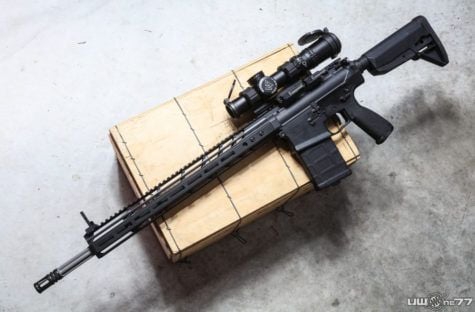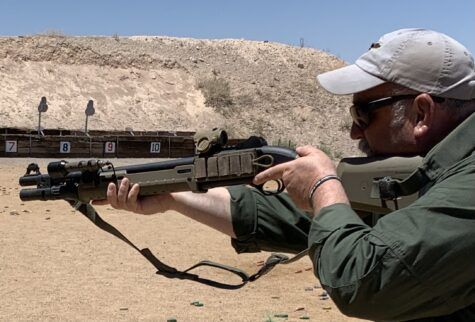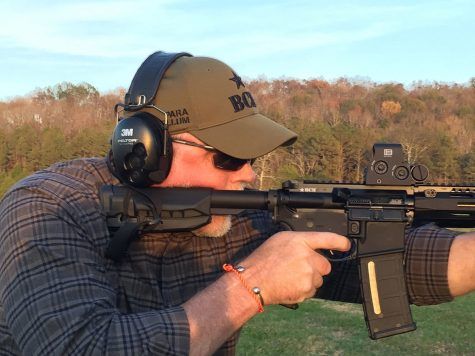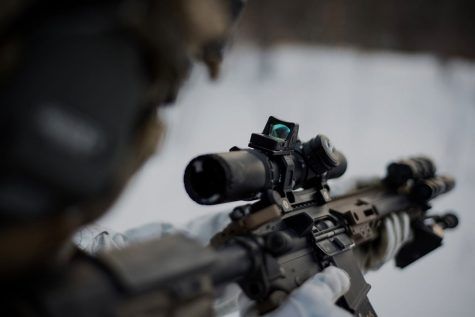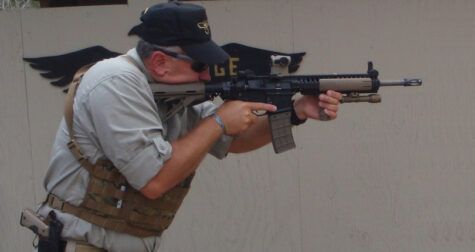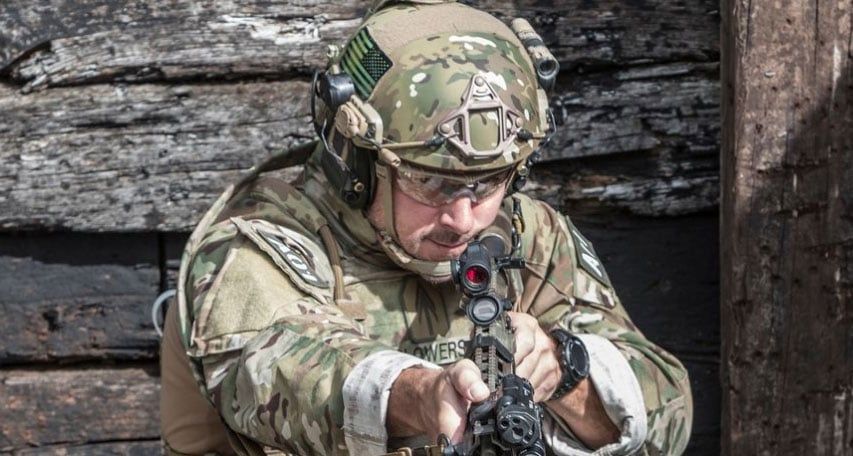
We recently reached out to Bill Blowers of Tap-Rack Tactical to discuss how his training company started, common misconceptions about SWAT, the transition he saw with the MP5 to the AR-15, and some of his current favorite ARs.
Bill Blowers’ background, via his website:
Bill Blowers has decades of training, teaching and using modern service weapons on SWAT operations. He served in the US Army for 6 years and was a Police Officer for 26 years. Bill spent the bulk of his LE career assigned to SWAT holding positions as a Sniper, Ballistic Shield Man, Mechanical/Ballistic Breacher, Assistant Team Leader and Team Leader on a large and busy regional SWAT team. He has planned or participated in approximately 1,500 missions, he has over 5,000 hours of documented training time, and holds instructor certifications in a variety of SWAT related topics.
Q: Bill, can we start with a bit of your early background and how you began your career in law enforcement…and how that led to what you do now at Tap-Rack Tactical?
Bill Blowers of Tap-Rack Tactical: The very early start was me joining the Army. I went in for about six years. I joined up as a scout. That was my early exposure to the M-16/AR family of guns…as well as tactics, and just that whole world of using guns in a professional capacity.
But from the time I was a little kid, I knew I wanted to be a copper. So I reenlisted from Germany to come to Fort Lewis in Washington…I did this because I’m from Washington state. I ended up spending a few years there at Fort Lewis. As time went on, I decided to punch out and I began looking for cop jobs in the region.
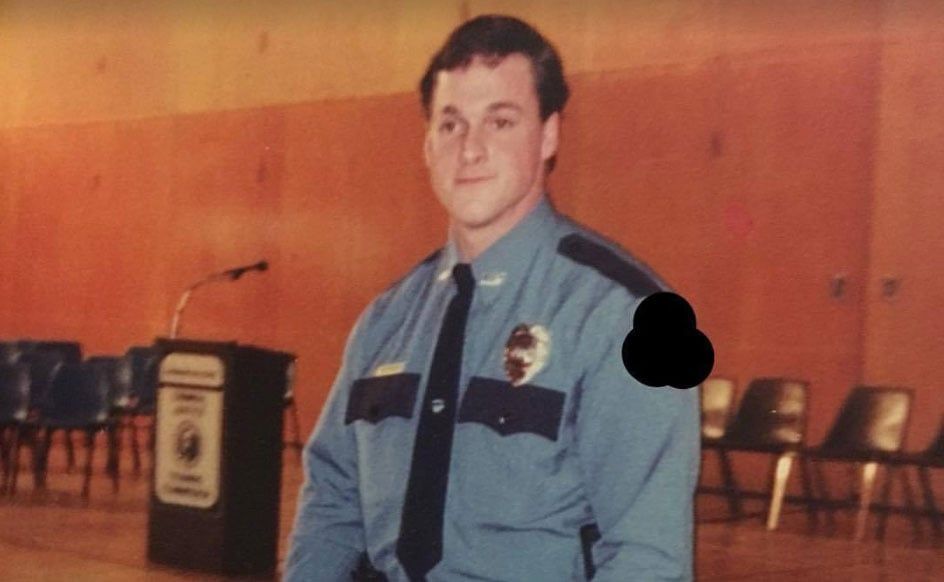
I got lucky and got hired by a small police department here in the area. There, I worked 18 months and then decided I wanted to move on to a bigger department. I then went to a police department that had a SWAT team, K-9, a bunch of stuff that little agency did not.
Army Experience Pays Off
Now, when I was an NCO in the Army, I had the opportunity to run some rifle ranges. This is because as you get rank, you’re training younger soldiers how to do stuff. And that idea of training others really interested me. I had also been really passionate about shooting since I was a little kid.
So, when the police department I worked for created a position for range staff, I eagerly submitted for that. Thankfully, I ended up getting lucky and getting that position. Then about a year later, I got lucky again and I was able to get on the SWAT team. I was able to then go through the rest of my career assigned to SWAT…doing the firearms-based stuff that I love.
Teaching Yourself and Others
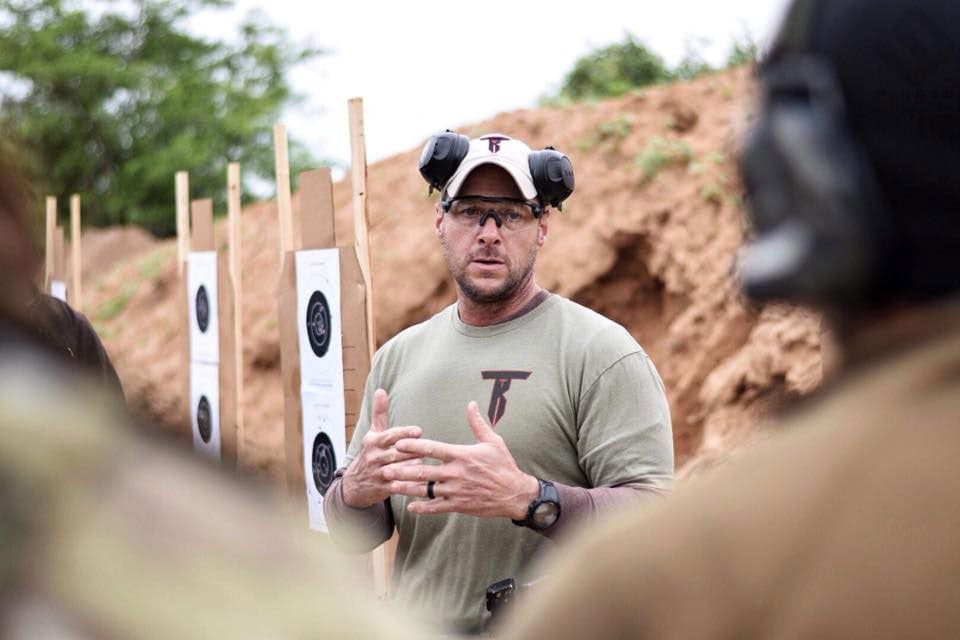
As it happened, the longer I was on SWAT, the more I got to train others. I have always really enjoyed that aspect of the job…trying to show others how to do things.
Another thing I enjoy is that as a teacher, if I am going to teach a topic, I have to research the topic and become either really good at it myself or become really knowledgeable at it. I’ve taken that seriously, and I tried to improve my own game a lot teaching for the agency.
The Beginnings of Tap-Rack Tactical
Somewhere around 2000-2001, I began teaching at the basic squad school for the state of Washington, where they run their own SWAT school out of the police academy. I did that for about eight years.
During this time, a friend of mine who was also teaching there and myself started a company together. We did that for about three years, but we eventually split up…It was amicable. It wasn’t any kind of big breakup or anything, he just had different things he wanted to get done and I wanted to work on the training side a lot more than we were doing.
Tap-Rack Goes Full Time
We split the business up and then I started Tap-Rack Tactical in 2006, primarily doing SWAT-type courses for cops only around the pacific northwest region. Then I decided last year to retire. I retired last February. I’ve been retired for a year now from police work after 26 years.
Since then, I’ve opened up some courses to good citizens…firearms courses in particular. And I’ve been doing that for the past year. I’ve been going around the country, meeting some good folks, meeting some good armed citizens, as well as still working with coppers.
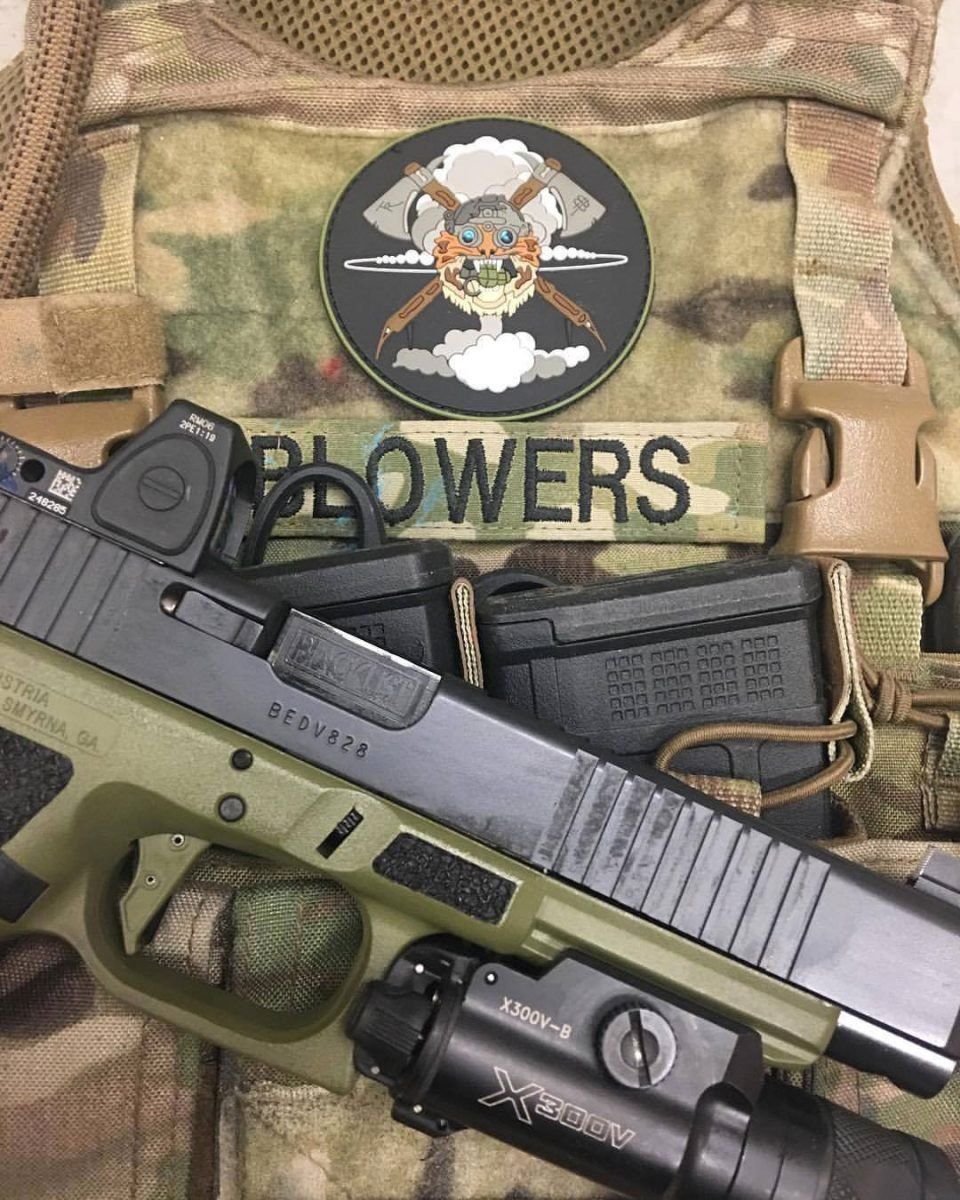
Q: As far as your basic SWAT class that you offer, can you go over who that’s geared for? Is it for officers who are looking to get on a SWAT team and want to prepare?
Bill Blowers of Tap-Rack Tactical: Most of the guys coming through my basic SWAT class are already assigned to a team. They’ve gone through whatever the selection process is for their agency or that team. They’ve been selected, they’ve been on a few months, and now that team is looking to get them through that basic level of training.
Occasionally, I’ll get guys who are not on a team yet. They’re attending with the hope the class will help them build their resume and give them a better shot at being selected.
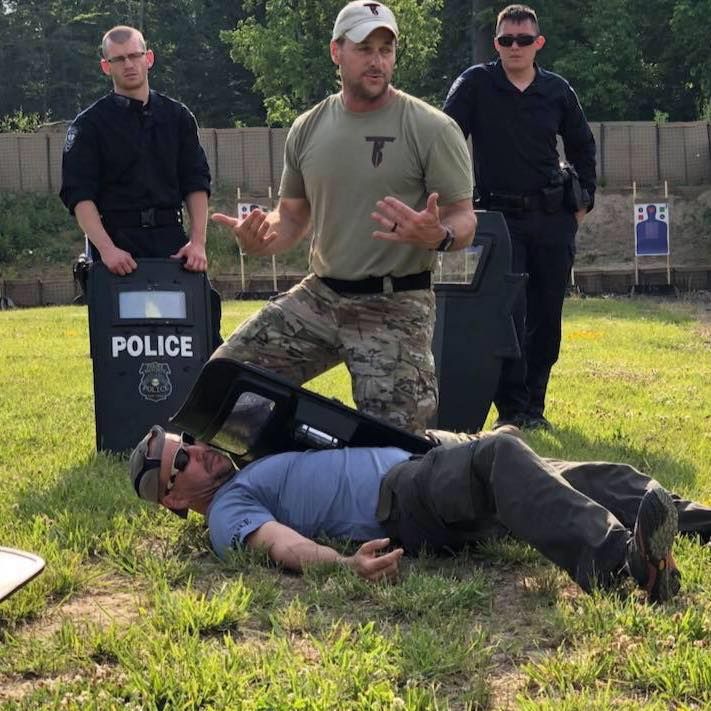
Q: When people hear the term “SWAT” I think it generates a lot of ideas in their heads. Are there misconceptions out there about SWAT you can help clear up?
Bill Blowers of Tap-Rack Tactical: There’s misconceptions about dang near every job that’s out there. I think on the SWAT side of the house, it’s that we’re just “knuckle draggers” and “pawns for the man” and all of that kind of crap. I would tell you that, in my experience, the guys that are the most protective of the 2nd amendment and the Constitution are SWAT guys.
Along with that, within my experience, there have been plenty of times where things that we were being tasked to do didn’t quite “smell right.” It was the guys on the team itself that went to the boss, and said “this doesn’t feel like something we should be doing” or “we need to solve it in a different manner.”
I tend to think SWAT guys are some of the more reasonable guys out there…versus the automatons that a lot of times they are portrayed as on TV and movies.
Q: Being involved with SWAT for so long, can you talk about some of the changes you’ve seen over the years?
Bill Blowers of Tap-Rack Tactical: The biggest change since I came on SWAT in 1995 is the gear – the weapons themselves, the optics, and some of the supporting equipment that makes everybody safer.
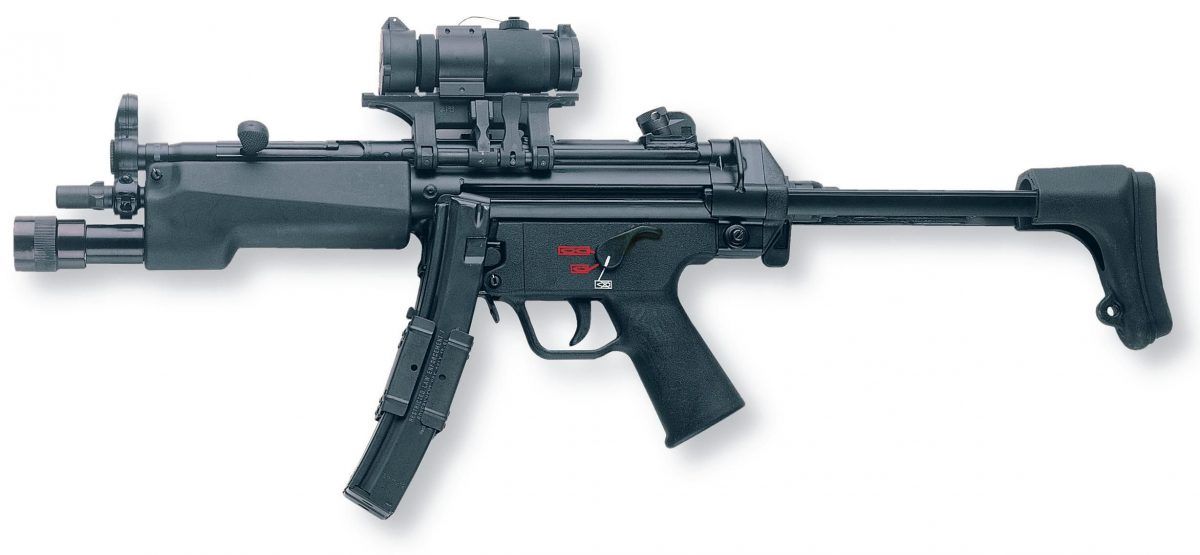
A basic example of that would be the first long weapon I was assigned on a SWAT team was an MP5 with iron sights and no other supporting equipment.
Over time, I ended up finding flashlights to put on it. Then, we transitioned to red dot sights on those guns. Then we got rid of those submachine guns altogether and we went to the AR platform around 1997-1998. As both an organization and as a SWAT team, we also got rid of the shotguns very early compared to some others.
Ensuring the Tool Does Not Become the Tactic
Now, other gear like pole cameras, robotics, drones and a variety of other things that teams are starting to use…those types of technology pieces require training of their own. Teams have to learn how to operate and keep them running. But just as important, they must also learn how to incorporate them into their tactics so that the tool does not become the tactic.
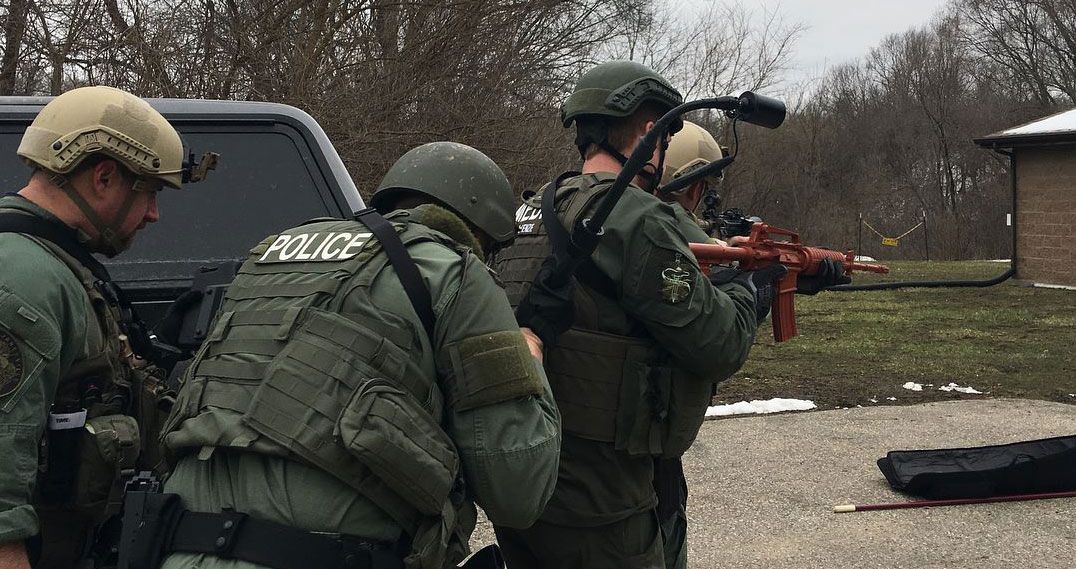
Sometimes teams will get the equipment and they rely so heavily on it that they change how they are conducting business. But if the equipment goes down, or it gets stuck…sometimes they flounder. There has to be a balance with that stuff.
What Goes Around…
But as far as straight tactics, techniques and procedures – internal and external…really not much has changed. Because there’s only so many ways you can go through a door, right? Not much has changed in that regard. The same things that were being done in 1995 are kind of the same thing being done today.
Everything seems to be cyclical in the tactics game. I’ll see something pop up as this “new thing”…someone will say “this is the Bill Blowers Technique.” And I’ll go “man, that is not the Bill Blowers Technique, that technique is from the late 90s, and it was called something else. All you’ve done is rebranded it and changed something slightly, but it is essentially the same dang thing going on inside the building.”
Loss of Institutional Knowledge
I wonder why that is sometimes. Perhaps it’s just the nature of humans…new guys coming on and old guys like me transitioning out. It seems we lose that institutional knowledge and experience over time. As such, the “new thing” is “new” only because there is no depth left on the team to say “No, we have already tried that and we found it lacking.”
Q: Can you go into more detail about why your team and many others seemed to do away from the MP5 and towards the AR platform?
Bill Blowers of Tap-Rack Tactical: We were very early adopters of short barreled ARs for our team…getting rid of our submachine guns and going to the 5.56 cartridge. There were a few reasons why we did that that. The biggest reason is it was overall much safer for the public if we ended up missing.
By now, it’s been very well documented and demonstrated that if you start shooting through sheetrock or common construction materials in America, the 5.56 round is stopped a whole heck of a lot faster than 9mm rounds are. 9mm will go through, in some cases, double and triple the amount of sheetrock that a 5.56 round will.
“Sooner Rather Than Later”
One of the things that’s distasteful about the job is the fact that sometimes police officers are forced to take human lives. So, if we are forced to shoot someone in the line of duty, there’s probably a reason for it, meaning that we’re trying to prevent them or stop them right now from continuing to hurt someone, or hurt one of your mates, or hurt you.
Now, the terminal performance of the 5.56 is vastly superior to that of the 9mm cartridge. This is another bonus because, if I am trying to save someone’s life, I’d rather do that sooner rather than later. So that is value added in regards to the AR platform.
Bill Blowers on the AR’s Ergonomics and Adaptability
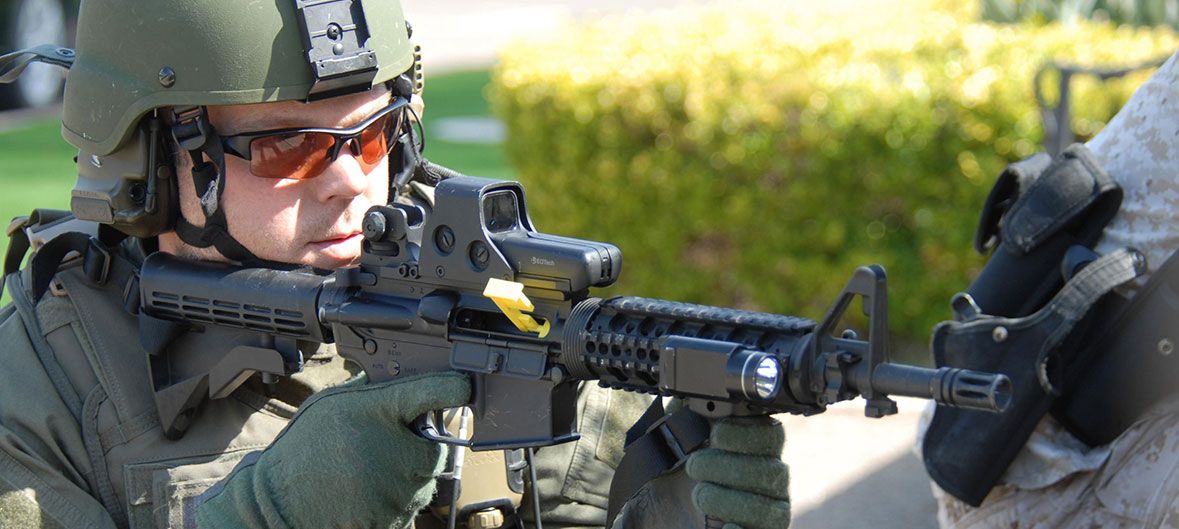
Our early ARs were 11.5” Colt Commandos. At the time we transitioned to those guns, we could not get a short gun that was not (fully) automatic. So, we trained with the auto component of these ARs, but mainly we were doing that because we had been training with the auto feature on the MP5s. It had not dawned on us yet that we didn’t need the automatic feature with a cartridge that performs better terminally.
So on the advancement side of the AR platform, it’s been huge for us to be able to get what we want out of the platform without having to make part & parcel changes. One of those is now we can get short-barreled rifles that are safe-semi only. This is all my team fielded. We don’t have any automatic guns because our opinion is they are unneeded for a law enforcement role.
But more than the ability to shape a gun to our specifications, just ergonomics of the AR platform over the old MP5 for me, particularly as a lefty, were absolutely huge. You start looking at stuff that some of the different manufacturers are doing with complete ambidextrous lowers…all that stuff is value-added when you are trying to outfit a team of guys that are both right and left handed.
“Boon for Law Enforcement”
Overall, the AR has just been a fantastic boon for law enforcement. And now, we have seen the advent of patrol rifles for police officers, which has been fantastic. I think the training across the board has become exponentially easier versus the 12-gauge shotgun, which some people just didn’t like. Cops come from all walks of life, and there are absolutely cops that are not shooters.
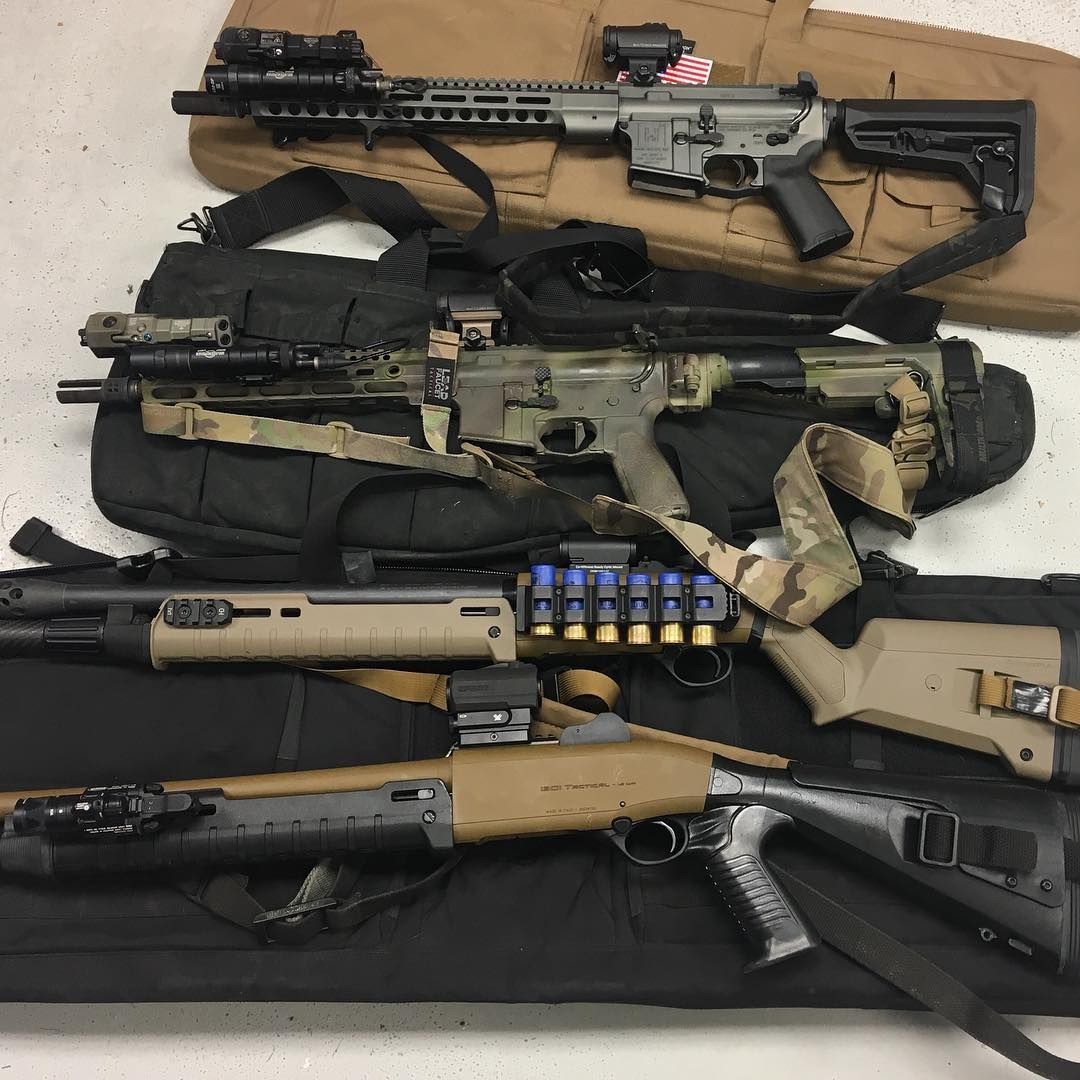
The heavy recoil of the 12-guage shotgun, for some people, they just didn’t like shooting it, so obviously their skill level with it was less than optimal. Now you give them an AR where it recoils softly and it’s easy-to-control…most everybody enjoys shooting it. That’s because it’s easy to hit stuff and they find success very quickly, so I tend to see more cops being interested in shooting the AR platform.
Making Life Easier for Law Enforcement
So for us, the AR-15 has been huge. Not only just the rifle, but all of the things with the AR-15 that have come along in the past 15-16 years as a result of the War on Terror. We’ve seen different manufacturers trying to produce things that make the life of a soldier easier. Well some of those things have a direct carry-over to us back here as police officers and as armed citizens trying to protect our own homes and our families…so across the board, it’s been dynamite.
Q: What’s been your opinion of the move towards low powered variable optics on the AR platform?
Bill Blowers of Tap-Rack Tactical: It’s absolutely a trend. I personally have several of them, but I only use them for my designated marksmen classes for law enforcement. It is not a sniper class…rather, it’s kind of bridging the gap.
On the SWAT side of the house, where we have snipers assigned to the team…those guys fulfill that magnified optics role. So, most of the guys doing work up close are just running straight red-dot sights. That said, I do think the LPVOs are awesome.
For a patrol guy who has maybe a bit more training with the rifle, the LPVO gives them ability to discriminate at a distance and be able to decisively say is it or is it not a weapon in that guy’s hands…or “that is or is not the guy that we’re looking for” at longer ranges. This obviously keeps everybody safer.
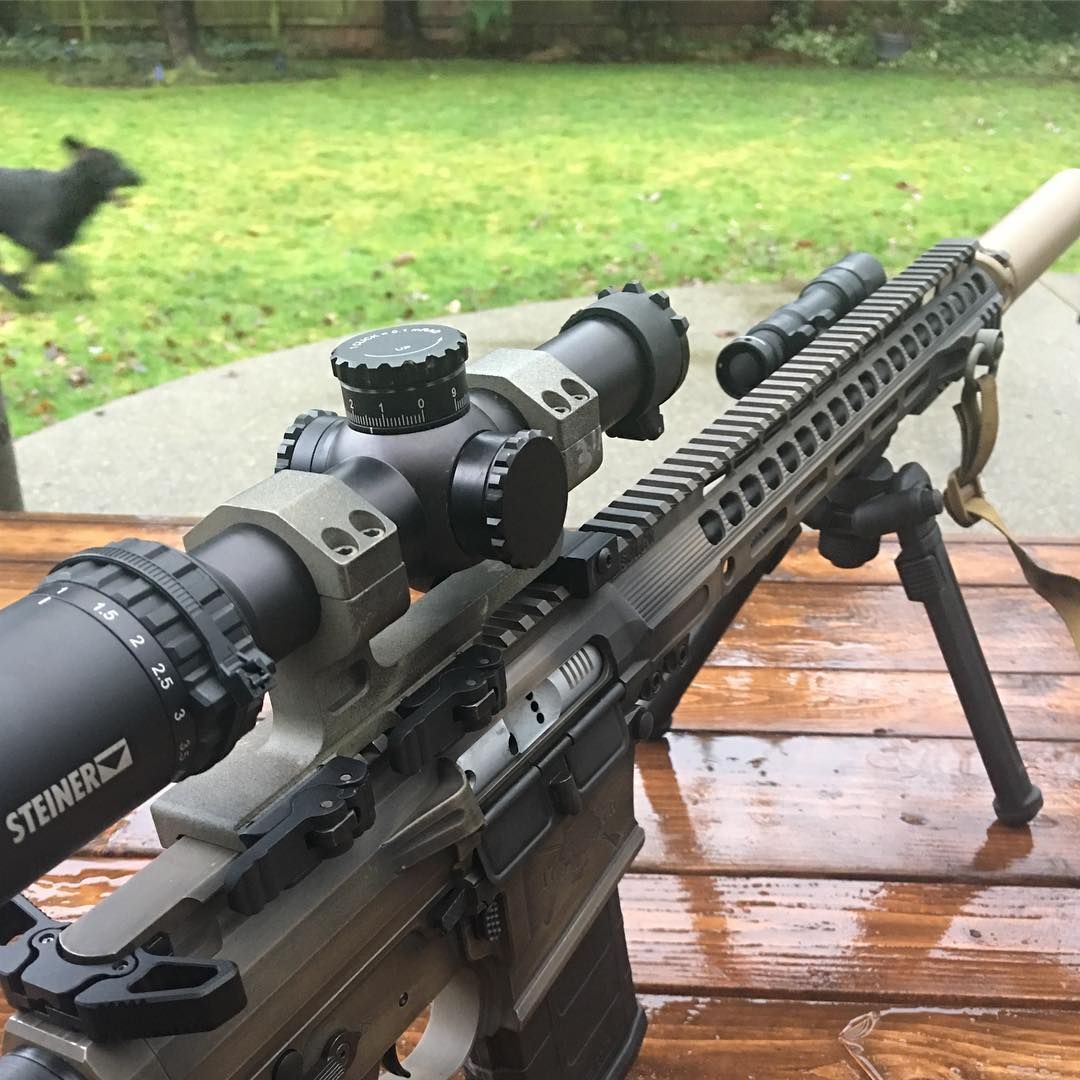
Man on the Water Tower
As an example, we implemented a designated marksman program for our patrol guys, and we had a very early success with an LPVO. One of the city’s maintenance guys had gotten up on one of the water towers. He was doing some sort of maintenance check up there, but he happened to have a long steel rod in his hand.
Well, a citizen called it in as a “man with a rifle on top of the water tower.” As a result of that, one of our designated marksmen responded. He knew where the water tower was…what his best approach was. He scoped the guy, and was able to put on the radio that it absolutely was NOT a rifle…that it was just a steel bar. To me, that was a great endorsement for the LPVO being on patrol.
Q: You’re around a lot of ARs…can you talk about a few that you’d recommend or wouldn’t hesitate to go with in a law enforcement role where lives depend on their proper function?
Bill Blowers of Tap-Rack Tactical: As far as what guns…In my case, we have always just stuck with Colts for patrol rifles. It’s a long-time name, but the guns have continued to come in as quality items. Now, we certainly inspect each rifle that comes in. We throw rounds through each one to make sure it is functioning properly.
Almost everyone on the range staff that is an instructor has been through a variety of armorer’s school. I went through Basic Armorer six times…Advanced Armorer once…so I think we were very responsible about trying to be knowledgeable on what we were issuing to our guys. As you said, lives depend on it. Not just theirs, but the citizens we swore to protect and serve.
Colt
As for Colt, I can recall being at an armorer’s class and there was a Colt M4 that had been around for years and years. It turned out the thing had over 70,000 rounds fired through it. The rifle, which had been run mostly auto and suppressed, had just gone out of service. We grabbed it, and we checked the barrel erosion with a gauge and it was still within spec. So that was very, very impressive, and I know if I see a Colt, I know it’s probably going to run.
Sons of Liberty Gun Works
Currently, I’m hearing nothing but great things about Sons of Liberty Gun Works. I’ve met their owner, Mike Mihalski twice now in person. I’ve talked with him and had a beer with him and that dude’s passion for the product they are putting out…you hear it in his voice.
It’s very nice to have a conversation with a guy and not feel like you’re talking to a used car salesman. He absolutely wants you to have a quality rifle. Because of that, he’s putting quality parts in the guns. He’s also backing them up with warranties that are unheard of in the industry…a “barrel for life” program…just crazy stuff like that, and I don’t think you can do that as a company and survive unless your products are outstanding.
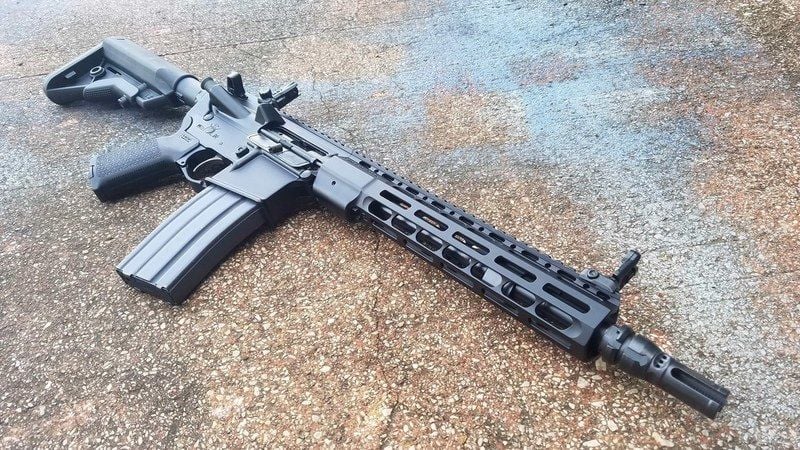
I just got one of his .308 guns. I have 500 rounds through it, all very fast and suppressed, just trying to dirty it up a little bit, and you can just see when you hold the thing, it’s fantastic with its quality control and attention to detail…and it’s also very affordable. Every patrol guy in America can afford one those guns, and every citizen, if they are interested in getting one, can afford one. It shows you don’t have to go to the high-end boutique shop to get a rifle you can trust.
Hodge Defense Systems
As for other guns…I have a Hodge rifle. Jim Hodge is well known in the industry and produces another quality gun. He uses fantastic parts and is extremely knowledgeable.
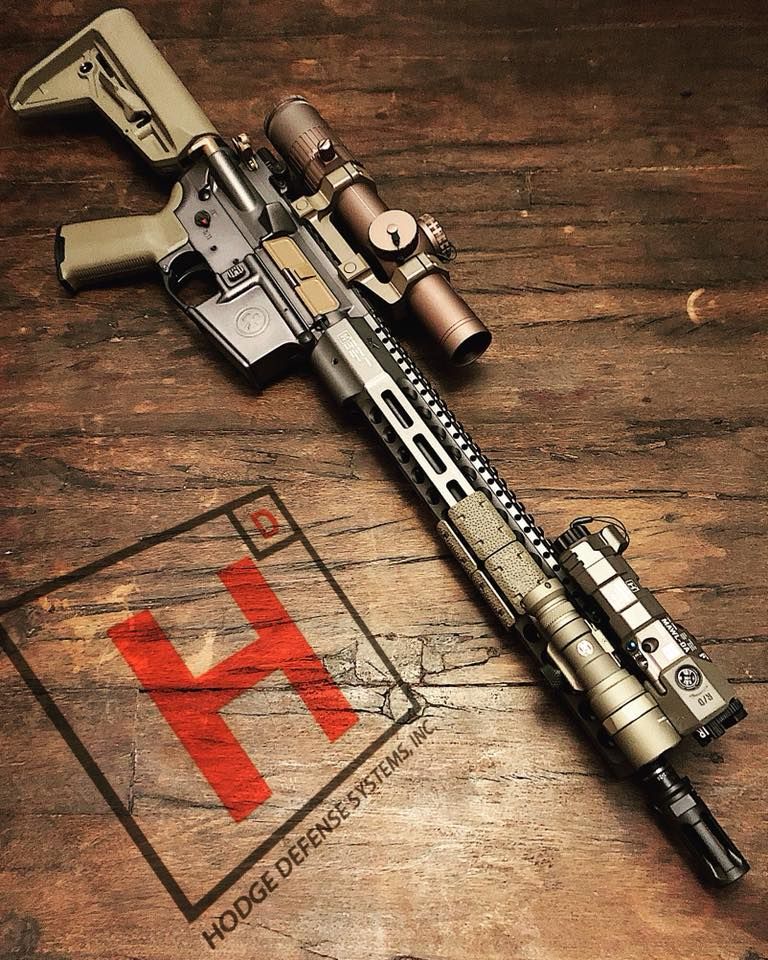
That said, there are very few of his guns available because they are all hand-built and checked. They are also expensive for the average guy. I don’t know if a department could afford to outfit an agency with all Hodge guns…well, maybe they could, depending on the agency.
Rainier Arms
The guys that work at Rainier Arms are just solid dudes as well. My SWAT team is a regional SWAT team and one agency out of the six buys guns built by Rainier Arms, which is a local company to us. They have always had good success with those as well. The agency specs out the parts that they want and Rainier Arms has armorers on staff that build them. I know that they’ve been great guns and they run well.
Q: Speaking of parts…any experience with building your own rifle?
Bill Blowers of Tap-Rack Tactical: My very first rifle was a “Franken-gun”…I bought a Mega lower receiver from Rainier Arms because they were local. Then, I then just started buying bits and pieces. I had been through armorer’s school. I also had some of the tools available and so I built it myself.
That gun ran like a champ. So, if you have the skills and the tools, you can absolutely build a rifle from the ground up in this day and age with really, really good parts. What’s nice is you can buy the parts as you go versus the large initial expense of buying a complete rifle from a good manufacturer.
So, I am not a guy that is opposed to people building their own rifles, but that comes with a caveat: If you don’t know what you’re doing, you shouldn’t be working on your car, or your gas furnace or anything else…including your rifle.
Q: Bill, thanks again for your time…As we wrap up, I’d love for you to talk the role SWAT plays, and why they are important.
Bill Blowers of Tap-Rack Tactical: I have never been a dude that thinks SWAT should do everything under the sun. There are absolutely times where patrol is more than sufficient…or a detective unit is more than sufficient. But it is “Special Weapons and Tactics” for a reason.
Early on, the “Special Weapons” was indeed talking about the special weapons we carried, like the MP5, the Benelli Super 90 semi-automatic shotgun, or the gas guns and other stuff to try to get a peaceful resolution from folks.
“Skill at Arms” is the Difference
But if you fast-forward to today, my whole team has semi-automatic guns. The difference between one of our patrol carbines and my SWAT rifle is non-existent. The big thing, speaking for my team, is the “skill at arms” that is the difference between the average patrol guy and the average SWAT guy.
Now, there’s certainly some patrol guys that can outshoot a SWAT team member if that was their hobby…but overall the skill level is higher. So, when you are having bad guys shooting in a neighborhood, at cops or at their neighbors, I think you want that higher level of skill coming in to try to resolve that problem because it’s just safer for the entire community.
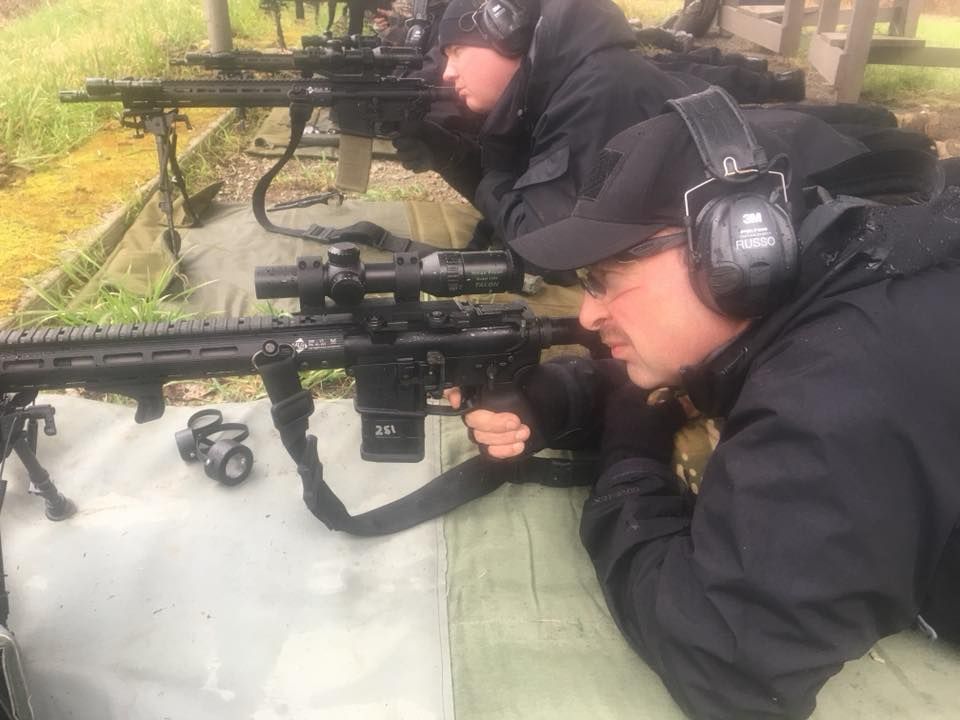
Resolving Problems
The second thing is there are ways we have now – versus 1995 – to resolve situations. There are ways that are less intrusive that allow both us and the bad guy more opportunity to think about things…be reasonable about things and work through a crisis prior to doing things we might have been forced to do back in 1995 due to lack of technology.
Explosive breaches are a good example. Before, we would have to approach the house and breach it via mechanical means, like a ram. Today, we can quietly approach, set an explosive charge on the front door, back away so it’s safe for everybody, then initiate the charge and breach the door. The benefit of that is that the door is gone, so now I can drive my robotics or fly my drones into the house, and try to isolate and locate suspects.
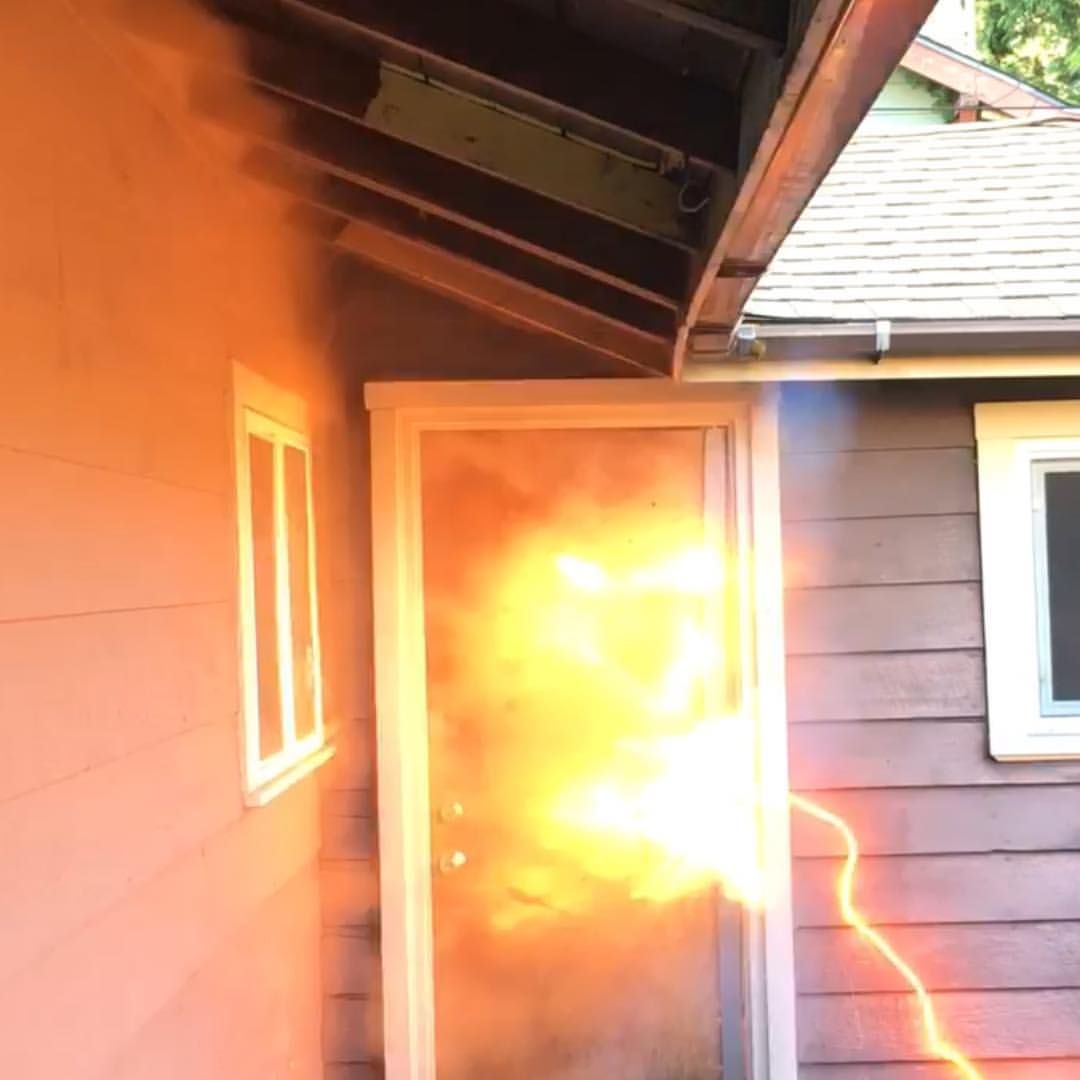
Increased Communications
I can also communicate with them through those devices. Now I can give them information as well as hear what they are saying. Because of this, we can start to work that negotiation piece, whereas before we would not have been able to do that.
Then if the communication breaks down, we can bring in chemical agents to drive that suspect from their barricaded position, which gives them a position of advantage. The advantage is now for the police, and we can safely take the suspect into custody.
Bill Blowers on the Necessity of SWAT
In conclusion, there are huge benefits to having a highly trained SWAT team. We’re intentionally trying to select the best guys we can from the organization….Guys that have shown level-headed performance in stressful instances on patrol. You can’t just join the police force and go right on the SWAT team. There’s usually going to be a two, three, four year waiting period before you can even test for SWAT. Because we want to see how does this person perform in other critical instances as a patrol officer. We want them much calmer, much cooler…
Then there is the training they receive. In my case, it was 30 hours a month where you were getting exposed to new things…seeing more incidents in training so now you have that frame of reference to draw from when it pops up and hit you for real on the street. All of these things lead to a calmer and cooler head when things start to get a little bit janky.
Bill Blowers on the Benefits of an “Overwhelming Show of Force”
In summary, SWAT is a good thing. I know for a fact that there are guys that probably wouldn’t be alive today if patrol had handled the incident. That’s not to say that patrol is a bunch of spazzes. That’s not it at all. Above all, it is the overwhelming show of force that lead them to realize the smart thing to do at that point was to surrender, where as a couple of patrol guys may not have gotten that response.
###
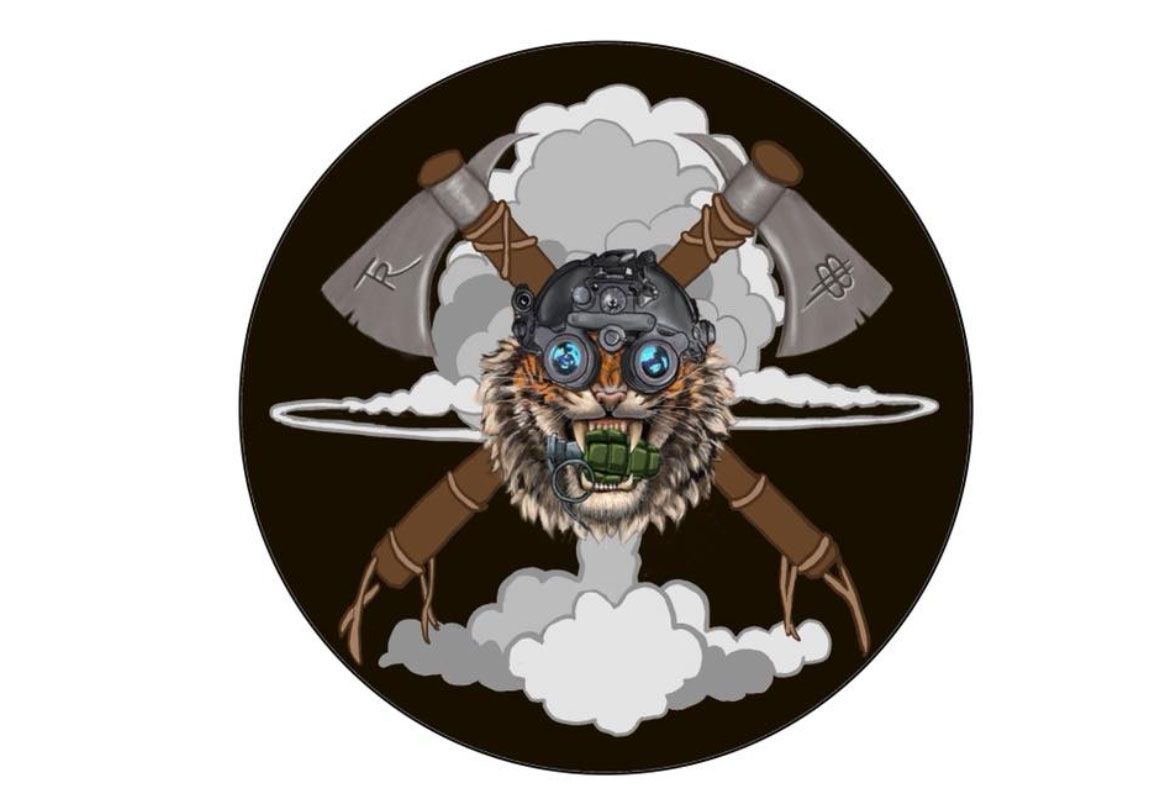
A great thank you to Bill Blowers for taking the time to sit down with us. Be sure to visit www.tap-rack.com for more information or inquire about training.

